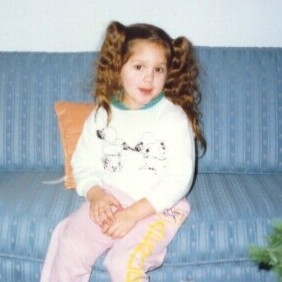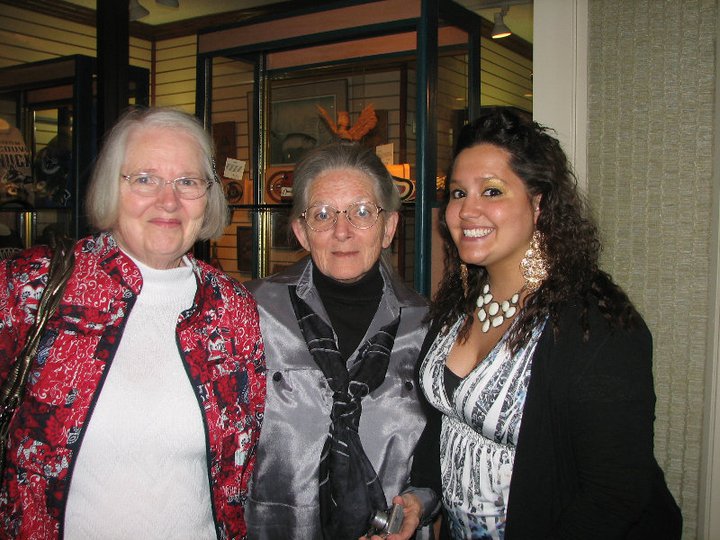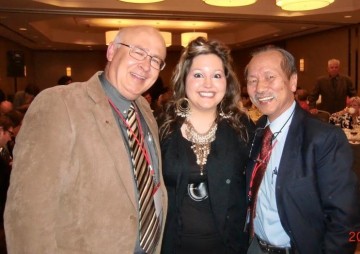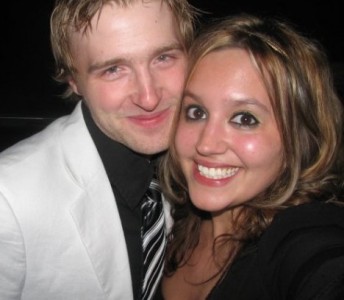Since Hemophilias A and B are bleeding disorders carried by females and manifest in males, we don’t often think of women suffering from hemophilia. However, Ryanne Radford is a young woman with severe hemophilia due to severe factor V deficiency.
Ryanne was kind enough to tell Ed Conway, the Director of the CBR, her story via an e-interview.
Ed: Hi Ryannne. Thanks for doing this interview. Could you tell us the story about when and how your diagnosis of hemophilia was made?
Ryanne: I was born and raised in a small town in Newfoundland and Labrador with a population of about 10,000 people. It was there that I was diagnosed with Hemophilia at seven months old. My diagnosis came about after I hit my head and developed a large hematoma. It took a while for me to be diagnosed because I have no family history of Hemophilia. My mom and Dad are healthy and I have two healthy older sisters and lots of healthy cousins.
When I first started showing signs and symptoms of Hemophilia the doctors suggested that I was perhaps playing too rough. My mother says that she knew that wasn’t the case and my Aunt had suggested Hemophilia but was told that that was nearly impossible. After 9 months of my parents travelling back and forth from our home town to the hospital about an hour away I was finally diagnosed with Hemophilia.
In larger cities, Hemophilia is not that rare but in my little home town, it seemed very suspicious to have a baby covered in bruises and bleeding from the nose and mouth. I know the hospital contacted social services several times to investigate my family. When I heard about this, at first it was very upsetting. But I know the people at the hospital were just doing their jobs.
Ed: What was the impact of the diagnosis on you and your family?
Ryanne: My family doesn’t often talk about how hard this was on them. They always act like it was no big deal but every now and then they will mention bits and pieces of what was going on in their minds and I know it was a nightmare for them. My older sister says that she always felt like a terrible big sister because there was nothing she could do to help me. My mom said she found it hard to see me hooked up to so many machines and IV poles. My father said that he was once told that I wouldn’t live to be past 18 years of age. I also remember them saying it was very difficult to find a baby sitter for me because no one wanted to babysit a child who could get hurt so easily.
In the early days they didn’t have the stylish helmets for Hemophiliacs like they do today, so the physiotherapy department at the hospital did their best to create a protective helmet for me made out of strips of material. I wore my helmet around the house but my mother didn’t want me to be treated differently so I didn’t wear it out in public very much.
Ed: How did your friends and teachers react?
Ryanne: When it came time to go to school I was very lucky. I was never treated any differently and my teachers seemed to be aware but never afraid. I think that was because of my parents. They treated me just like any other child and everyone else seemed to follow suit.
Ed: What sort of early treatments were used? Andy side effects? Did they always work?
Ryanne: Growing up I would be treated with four units of fresh frozen plasma every time I fell off my bike, lost a tooth or twisted my ankle. The most traumatic experience I have had to date was when I was twelve years. That is when I started my period and began having lots of problems. The bleeding would not stop and I began losing lots of blood. I began getting treated with 4 units of fresh frozen plasma once a month which worked for a while until I developed ovarian cysts which ruptured and bled into my abdomen. This was a major bleed and I spent almost a whole year in the Janeway Children’s Hospital in St. John’s, NL. I was treated with more than 100 units of fresh frozen plasma. The doctors contemplated a hysterectomy but felt it was too aggressive. They tried several medications which caused me to have some very interesting symptoms. But I was still having some bleeding so I eventually tried the birth control pill which seemed to work perfectly.
My other major bleeds have been into my iliosopas muscle. I have bled into this muscle several times and each time it seems to be quite a large bleed. My most recent ordeal was in December of 2009 when I was admitted into the Foothills Hospital in Calgary for an iliosopsas bleed. I was told that the bleed was quite large and I was on bed rest for an entire month. Needless to say it was the worst Christmas ever! But I did get lots of presents. Whether or not that was because I was in the hospital, we will never know!
Ed: What are your major fears?
Ryanne: As I get older I really worry about employment. No one wants an employee who is out sick all the time and with no warning. This has been a source of pain for me for sure as I have been fired, laid off and threatened in the work place because of my Hemophilia and the frequent sick days that I sometimes have to take. Right now I am working full time and I have hope that this will be a good experience for me.
Ed: What are the biggest hurdles that you faced or are facing as you grow?
Ryanne: My Hemophilia has affected every aspect of my life including, what I studied in school, where I live and my hobbies and interests. Right now I am completely wrapped up in wedding plans. Our wedding will take place on July 20, 2013 in our home town of Stephenville, Newfoundland. We are having a big church wedding with about 200 guests, so you can see why I’ve been taking so much time in planning.
Hemophilia has been a big concern of mine when it comes to wedding planning because I worry I might get a bleed and not be able to fly to Newfoundland or I will get a bleed before the wedding and be in pain on my special day. In this case I just have to pray for the best and try not to worry about it too much and jut take each day as it comes.
Ed: Have there been changes in treatment or monitoring of the treatments? And have these been useful? How have the new treatments affected your life and life-style and life-decisions?
Ryanne: The best treatment for me for the last 28 years has been fresh frozen plasma. I will be treated with varrying amounts depending on the location and severity of the bleed. For example a simple elbow bleed might need only 4 units, whereas the larger bleeds I’ve had required nearly 100 units. My doctor and I have recently discussed the use of new products that are detergent treated and with less risk of blood borne pathogens. I have not tried this product yet and am nervous to try it.
Ed: What is the best way for you to personally get support?
Ryanne: Living with a chronic illness isn’t easy. I find support in a lot of ways. I am blessed with a wonderful fiance and a large circle of friends and family. I also attend church and do a lot of volunteer work. Currently I am the Co-President of the National Youth Committee of the Canadian Hemophilia Society. I am also the past president of the Calgary chapter of the Canadian Hemophilia Society.
Ed: What impact has your Blog or other social media had?
Ryanne: I find it helpful to tell my story. I started a blog about 3 years ago dedicated to raising awareness for women with bleeding disorders called Hemophilia is for girls. I have about 105 followers and have been featured in three American publications. My blog is most popular in Canada, USA and India. Social media is a great tool and I use it on a daily basis to connect with other hemophiliacs from around the world.
Ed: The CBR tries to encourage students and young scientists and physicians to work and study in this field. Can you comment on why this might be important to you and others who are affected, directly or indirectly, by bleeding disorders such as hemophilia?
Ryanne: I feel that it is so important to have students educated in the field of Hemophilia and bleeding disorders. Patients with this condition often need prompt care and very much need a doctor who will listen to them.
I speak every year to the first year medical students at the University of Calgary and I am always happy to do it as simply being educated can make such a huge difference in the way people with bleeding disorders are treated.
Although there is no cure for Hemophilia at the moment I feel that having resources, support and education can certainly lessen the negative effects that a bleeding disorder has on someone. As for me, I feel I am doing my part by documenting my life, the good the bad and the ugly. That way, maybe some other person down the road might be able to read it and get some help from it or at least it will put a smile on their face.
Ed: Thank you, Ryanne, for taking the time to so eloquently and honestly share your feelings and experiences. Hopefully, your insights will help others who are following similar paths. And I will encourage everyone to read your Blog, links for which are provided at the bottom of this article. We at the CBR wish you all the best and much happiness!
Notes: Raised in Newfoundland, Ryanne now lives in Calgary Alberta. Ryanne holds a degree in communications and a diploma in journalism. She is the co-Chair of the National Youth Committee and Vice President of the Calgary Chapter of the Canadian Hemophilia Society. You can read and participate in her blog, Hemophilia is for Girls.







Comments are closed, but trackbacks and pingbacks are open.